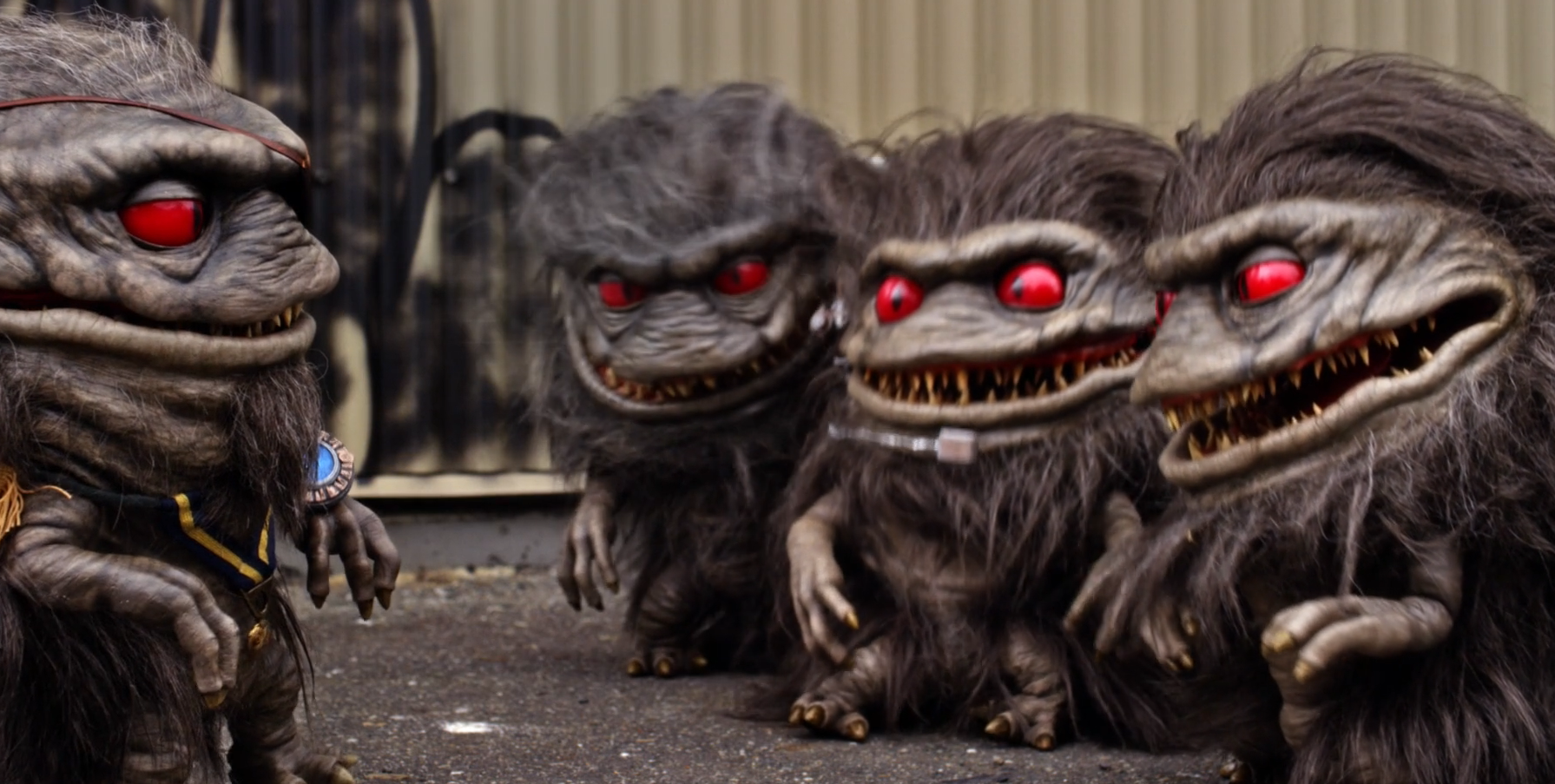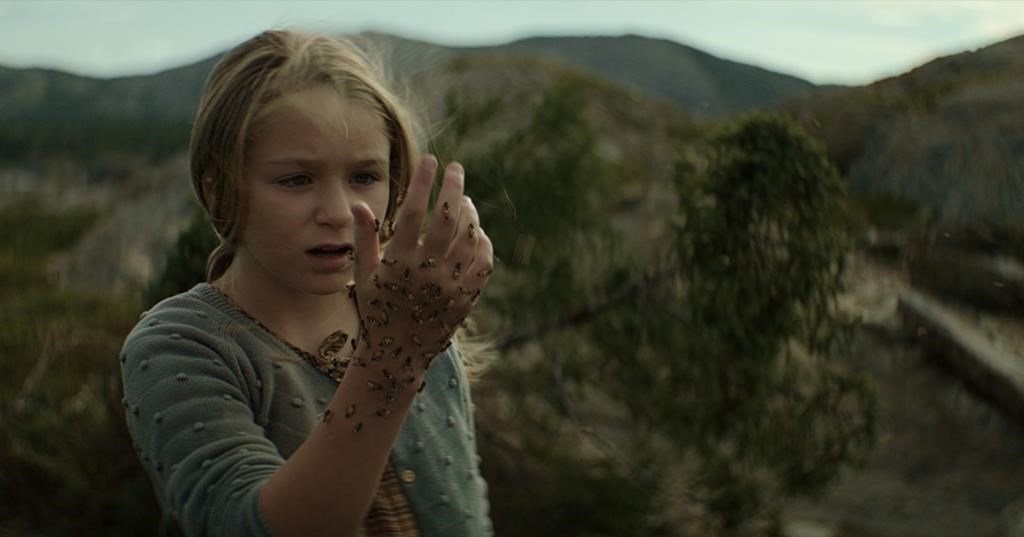Reviews
[Review] Even the ‘Critters’ Franchise Deserves Better Than “Critters: A New Binge”

Nearly 30 years after the last installment in the franchise – that’d be 1992’s direct-to-video Critters 4… the one in space – those lovable Crites are back in “Critters: A New Binge,“ a brand new Shudder Original Series from director Jordan Rubin (Zombeavers). Made up of eight episodes, the very first Critters TV series actually runs shorter than even the shortest film in the franchise, making for a binge event that’ll take up around 70 minutes of your time.
Trust me, that’s a blessing in disguise.
“Critters: A New Binge,” which is essentially a reboot that bears no storyline connection to the movies, sees the Crites returning to Earth on a mission to rescue one of their own. The journey takes them to California, instructed by their President to bring back the missing Crite and… keep their hunger at bay. Naturally, it’s not long before they get really, really hungry.
After 27 years without the Critters franchise in our lives, the premiere episode of “Critters: A New Binge” is, well, an instantly sobering reminder that we’re a long way from the heartfelt ’80s charm that made so many of the decade’s horror movies – Critters most definitely included – such beloved classics. Even on a budget of just $3 million, Critters managed to take us into a fully realized, super charming world filled with tiny monsters and shape-shifting bounty hunters back in 1986, but “Critters: A New Binge” is playing with what I can only assume to be far less than 1/3 of that budget and it shows every single step of the way.
The series’ CG effects are so Syfy-level bad that they wouldn’t have even passed muster back in the ’90s, and the bad news is that “A New Binge” is absolutely loaded with that bargain basement effects work. If you thought the Silly Putty-looking green heads of the bounty hunters looked, well, silly in the original Critters, just wait until you see how they look when they’re entirely computer-generated. There was a charm even to the bad practical effects of decades gone by, but there’s just nothing even remotely charming about low-grade CGI.
On the plus side, the Crites in “A New Binge” are practically realized, the work of puppeteer Glenn Williams and his team. In a series that’s so CG-happy it’s damn sure nice to see some practical puppets on screen, but at the same time, the Crites never quite feel like real characters so much as they do rubber Halloween decorations that are being shaken around by human hands just out of frame. That said, I do appreciate the effort to imbue some of the Crites with individual personalities, and the puppet work is unquestionably the strongest suit of the whole series – props must also be given for the massive Crite Ball, which Critters 2 fans will get a kick out of. But more than anything, watching the series left me yearning for the classic effects work of the Chiodo Brothers, whose Crites felt more *alive* than they do here. There’s something about magical ’80s effects that seemingly just can’t be replicated today.
As for the other iconic characters from the franchise, well, let’s just say that the presentation of the Bounty Hunters leaves a whole lot to be desired. There are three of them in the series, and both Ug and Charlie – the only two characters who had appeared in all of the Critters films – are sadly absent this time around. The shape-shifting effects work is rough – the green-screen presentation of Australia, where we meet the show’s two main Bounty Hunters, is even worse – and the characters are a far cry from Ug and Charlie. In the original franchise, the Bounty Hunters were one of the most interesting pieces of the puzzle, and they were clearly being treated as an afterthought in the “New Binge” writers room.
The human characters don’t fare any better, unfortunately. The series primarily centers on Christopher (Joey Morgan) and his mom Veronica (Kirsten Robek), characters entirely defined by single traits: Christopher eats a lot, which the series never lets us forget, and Veronica sleeps around a lot, which the series never lets us forget. Both of these character traits, it turns out, are tied to a reveal that comes in Episode 6, which is so unbelievably absurd that you might have found me praising it if it were nestled inside of a series that delivered on the entertainment factor necessary to pull off such an out-there bit of nonsense. It’s either an amusing idea or the worst idea, and I’m leaning towards the latter.
Of course, I won’t sit here and pretend that the Critters franchise set a very high bar beyond the first couple films – I’ve seen Critters 4 – but “A New Binge” doesn’t even manage to clear that low bar. Your enjoyment of this particular entry in the franchise will probably depend on how humorous you find the line “big hairy balls” in reference to the titular creatures, and it seems clear to me right now that I’m probably just too old for such lowbrow humor.
Cheap, unfunny and more Troma (minus the gore) than Critters, “A New Binge” hardly captures the spirit of the films. I’ve seen fan films better than this (in fact, there actually is a Critters fan film titled Critters: Bounty Hunter that’s quite exceptional), and that’s just not something you ever want to say about the official return of a franchise you love.
I want more Critters in my life. Just not like this.
“Critters: A New Binge” heads to Shudder on March 21st.

Reviews
‘The King Tide’: An Island Town Rots with Moral Decay in Canadian Folk Horror Fable [Review]

The opening scenes of director Christian Sparkes’ The King Tide set an ominous tone: a powerful storm takes down the power lines of a small island town as a pregnant woman loses her child while her dementia-suffering mother sits nearby. In the morning, as the town takes stock of the damage and the power is restored, a surprising discovery is found in an overturned boat in the harbour: a baby girl…with the ability to heal.
Writers Albert Shin and William Woods, working from a story by Kevin Coughlin and Ryan Grassby, treat the story as something of a morality tale mixed with a fable. Following the cold open, the action jumps ahead 10 years at a point when the unnamed island (the film was shot in Newfoundland, Canada) is thriving. The fishing is bountiful, the islanders are self-sufficient and have cut ties with the mainland, and most everyone is happy.
As characters are prone to saying, it’s all thanks to Isla (Alix West Lefler), the miracle baby who has grown up worshipped by the islanders. While Mayor Bobby Bentham (Clayne Crawford) and his wife Grace (Lara Jean Chorostecki) endeavor to raise Isla like any other little girl, the reality is that the island’s entire ecosystem revolves around her miraculous powers. It is only because of Isla that they survive; every aspect of their lives – from medicine to food – relies on her.
Each day the citizens line up for their allotted time with the young girl – be it to stave off breast cancer, like Charlotte (Kathryn Greenwood), or recover from another night of heavy drinking like former doctor, Beau (Aden Young). There’s even a predetermined schedule for when she will go out on the boats and use her power to lure fish into the nets.

One fateful day, Bobby succumbs to peer pressure and alters Isla’s schedule at the last minute to accompany cod fishermen Marlon (Michael Greyeyes) and Dillon (Ryan McDonald). A childish game with fatal consequences is played, but with Isla indisposed, a young boy, who would have otherwise been fine, dies. And while the rest of the community grieves, it is Isla who is completely shaken and, unexpectedly, loses her powers.
Suddenly the entire balance of the island is thrown off. Folks like Grace’s mother, Faye (Frances Fisher), who relied on Isla to keep her dementia at bay, suddenly reckon with mortality, while the food security of the town is called into question. Faye’s late-night “support group” meetings take on an urgent and secretive tone and the townspeople claim ownership of Isla’s time despite Bobby and Beau’s protests that she needs rest to recover from her trauma.
Like the best thrillers, the politics and personalities within the community come into play as morals are compromised and the good of individuals vs the collective is played out in increasingly desperate situations. The King Tide excels because it is interested in exploring the competing motivations of the townspeople, while also resolutely refusing to paint anyone as inherently good or bad. These are desperate people, determined to remain independent and free from outside interference, while protecting their trapped-in-amber way of life.

These developments work because there’s a humanity to the characters and The King Tide wisely relies heavily on its deep bench castoff character actors to drive the conflict. Crawford is the de facto protagonist of the ensemble and he’s also the most straightforward character: Bobby is a good man and a loving father, but he’s no white knight. At several points in the film, his willingness to acquiesce to the demands of the community and retain his power causes events to spiral further out of control.
Even more fascinating are Grace and Faye, two commanding women whose capacity for maternal love is matched – or eclipsed – by their own self-interests. A mid-film discovery about Isla’s power reframes Grace’s priorities, ultimately pitting her against her husband. As a result, Grace is incredibly compelling and frustrating (in a good way) and Chorostecki, who has done great genre work on both Hannibal to Chucky, plays the moral ambiguity exactly right. Grace is a fascinating and flawed human character in a film filled with them.
The same goes for Fisher, who deftly balances Faye’s grandmotherly love for Isla with the needs of the community and, by extension, her own health demands. In the hands of a lesser performer, it would be easy to hate Faye for her actions, but Fisher’s performance perfectly captures the fierce determination and fear that drives the island’s matriarch.
Finally, there’s Aden Young, The King Tide’s secret weapon. The ten-year jump reveals that Beau has undergone the most significant transformation: while everyone else has benefitted from Isla’s powers, her presence has eliminated the need for a doctor. With the clinic effectively shuttered, Beau has become an alcoholic; a shell of his former self with no purpose.
Like Bobby, Beau is the easiest character to root for because of his selfless desire to protect Isla, but Young (renowned for his work with Crawford on Rectify) unlocks the character’s tragic pathos and, in the process, becomes the film’s emotional anchor.

Framing the moral decline of the islanders and anticipating the unexpectedly devastating climax is the natural beauty of Newfoundland. As shot by cinematographer Mike McLaughlin, there’s a steely beauty to the geography, resplendent with rocky cliffs, pounding surf, and gusty bluffs that reinforce the islanders’ isolation.
There’s a fierce pride in their struggle to survive independently, evident in the simple lodgings and the antiquated alarm bell that is rung whenever fishing ships from the mainland stray too close. It’s a chilly, atmospheric calling card for one of the most picturesque provinces in Canada, but it is a perfect complement for the folk horror narrative.
Armed with serene, beautiful cinematography, murky moral developments, and a deep bench of talented character actors, The King Tide is a quiet gem that demands to be seen. It’s one of the year’s best genre films.
The King Tide is in theaters April 26, 2024.


















You must be logged in to post a comment.